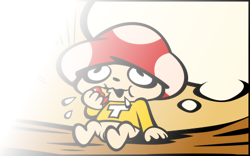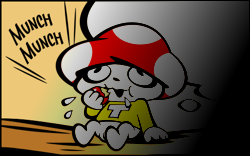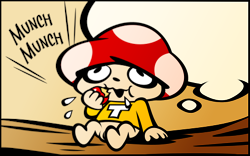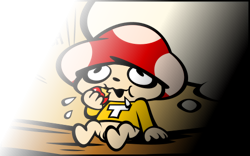[PYTHON] PIL / Pillow cheat sheet
PIL / Pillow is a compact and fast image library for Python. We have summarized frequently used processes (updated from time to time)
Difference between PIL and Pillow
There is basically no reason to use PIL, Pillow has a bugfix for resizing filters and is of higher quality.
About Pillow speed
Pillow is tuned very fast and always runs faster than its similar library, ImageMagick.
However, getpixel / putpixel is very slow, so don't use it for anything other than image generation.
There is also a faster pillow-simd. It seems to be about 4 to 5 times faster than the original Pillow.
pillow-simd https://github.com/uploadcare/pillow-simd
reference
https://python-pillow.org/pillow-perf/
Image mode list
| mode | Description |
|---|---|
| 1 | Used for 1-bit mask, logical operation is possible |
| L | 8bit grayscale |
| P | Palette mode |
| RGB | 8bit x 3 |
| RGBA | 8bit x 4 transparency(alpha)With |
| CMYK | 8bit x 4 Commonly used for printing |
| YCbCr | Often used for 8bit x 3 video |
| HSV | 8bit x 3 pillow only |
| RGBa | Multiply RGB value by alpha channel |
| LA | Multiply the L value by the alpha channel |
| I | 32bit integer |
| F | 32bit floating point |
Resize filter
| filter | Downscaling quality | Upscaling quality | performance |
|---|---|---|---|
| Image.NEAREST | ⭐⭐⭐⭐⭐ | ||
| Image.BOX | ⭐ | ⭐⭐⭐⭐ | |
| Image.BILINEAR | ⭐ | ⭐ | ⭐⭐⭐ |
| Image.HAMMING | ⭐⭐ | ⭐⭐⭐ | |
| Image.BICUBIC | ⭐⭐⭐ | ⭐⭐⭐ | ⭐⭐ |
| Image.LANCZOS | ⭐⭐⭐⭐ | ⭐⭐⭐⭐ | ⭐ |
- Image.ANTIALIAS is another name for Image.LANCZOS and is left for compatibility. reference http://pillow.readthedocs.io/en/3.4.x/handbook/concepts.html#concept-filters
Image module
Grayscale
img.convert("L")

Grayscale considering alpha value
alpha.convert("LA")
 →
→
By the way, convert ('L') does not consider the alpha value.
alpha.convert("L")
 →
→
HSV conversion
img.convert("HSV")
Only pillow can be converted to HSV color space. It is composed of three components: Hue, Saturation, and Value. The following is an example of shifting the color wheel.
h, s, v = img.convert("HSV").split()
_h = ImageMath.eval("(h + 128) % 255", h=h).convert("L")
Image.merge("HSV", (_h, s, v)).convert("RGB")

CIE XYZ conversion
CIE XYZ is a color space adjusted so that the Euclidean distance between colors is the same as the difference perceived by humans.
rgb2xyz = (
0.412453, 0.357580, 0.180423, 0,
0.212671, 0.715160, 0.072169, 0,
0.019334, 0.119193, 0.950227, 0
)
img.convert("RGB", rgb2xyz)
Binarization
gray = img.convert("L") #Convert to grayscale
gray.point(lambda x: 0 if x < 230 else x) #If the value is 230 or less, it will be 0.

Brighten / darken the image
img.point(lambda x: x * 1.5) # 1.Make it 5 times brighter
img.point(lambda x: x * 0.5) # 1 /Darken to 2


Sepia
Convert the image to grayscale and then sepia it.
gray = img.convert("L")
Image.merge(
"RGB",
(
gray.point(lambda x: x * 240 / 255),
gray.point(lambda x: x * 200 / 255),
gray.point(lambda x: x * 145 / 255)
)
)

Gamma correction
Gamma correction can also be converted at a very high speed by using a look-up table. Assuming that src = input color, γ = gamma value, and g = gain value, the gamma correction formula is as follows.
dst = \biggl(\frac{src}{255}\biggr)^{1/γ} \times g \times 255
def gamma_table(gamma_r, gamma_g, gamma_b, gain_r=1.0, gain_g=1.0, gain_b=1.0):
r_tbl = [min(255, int((x / 255.) ** (1. / gamma_r) * gain_r * 255.)) for x in range(256)]
g_tbl = [min(255, int((x / 255.) ** (1. / gamma_g) * gain_g * 255.)) for x in range(256)]
b_tbl = [min(255, int((x / 255.) ** (1. / gamma_b) * gain_b * 255.)) for x in range(256)]
return r_tbl + g_tbl + b_tbl
img.point(gamma_table(1.2, 0.5, 0.5))

Speeding up point used in loops
It is better not to pass lambda to ʻImage.point in the loop, it is faster to expand it in advance because the argument passed to point` is just a conversion table.
for ...:
img.point(lambda x: x * 100)
#The lower process is equal to the upper process but faster
table = [x * 100 for x in range(256)] * len(img.getbands())
for ...:
img.point(table)
getbbox
ʻImage.getbboxreturns the smallest non-zero value in the image, an image with all zeros returnsNone`.
Margin cut of alpha component
alpha = Image.open("alpha.png ")
crop = alpha.split()[-1].getbbox()
alpha.crop(crop)
 →
→
Same pixel check
If the two images are the same ʻImageChops.difference returns all 0 images, so if getbboxisNone`, it can be judged to be the same.
ImageChops.difference(img1, img2).getbbox() is None
resize
img.resize((128, 128), Image.LANCZOS)

thumbnail
Thumbnails maintain aspect ratio, unlike resizing.
Note that for some reason thumbnail is a destructive method, it's ʻImage.copy` so it's a good idea to make a duplicate.
img.thumbnail((128, 128), Image.LANCZOS)
img.size
# (128, 79)

rotation
Specifying True for the argument ʻexpand` expands the image if it grows when rotated.
img.rotate(90, expand=True)

Mosaic processing
Mosaic processing can be reduced and enlarged with ʻImage.LINEAR`, but if you reduce it after applying Gaussian blur, it will be a soft mosaic.
#Jagged mosaic
img.resize([x // 8 for x in img.size]).resize(img.size)
#Apply Gaussian blur for a soft mosaic
gimg = img.filter(ImageFilter.GaussianBlur(4))
gimg.resize([x // 8 for x in img.size]).resize(img.size)


Alpha blend
Image.blend(img,effect_img, 0.5)



Subtractive color
img.quantize(4) #Color reduction to 4 colors

Paste the alpha image
To paste an image with alpha, specify the image with alpha in the argument'mask'of ʻImage.paste`.
img.paste(alpha, mask=alpha)

Count the colors used
ʻImage.getcolors`, which counts the colors used, cannot count more than 255 colors with no arguments. For images that use more than 255 colors, it is safe to pass the number of pixels as an argument. [^ 1]
[^ 1]: 2017-02-07 Fixed It was'Image.getcount', but it is correctly'Image.getcolors', I will fix it.
img.getcolors(img.size[0] * img.size[1])
histogram
Returns a list of image color histograms. Since each band is returned in succession, 256 x 3 = 768 elements are returned in RGB mode.
img.histogram()
Color replacement
There is no method to replace the color, if you want to replace the color please refer to the article below.
Replace image colors fast with PIL / Pillow
ImageOps module
Negative / positive reversal
ImageOps.invert(img)

Flip left / right / flip up / down
ImageOps.mirror(img) #Flip horizontal
ImageOps.flip(img) #flip upside down


Colorization
Colors a grayscale image with a pixel value of 0 to black and a pixel value of 255 to white.
gray = ImageOps.grayscale(img)
ImageOps.colorize(gray, black=(0, 0, 0), white=(255, 255, 0))
 →
→ 
Posterize
Reduces the bit depth of the image to the value of the argument to simplify the color.
ImageOps.posterize(img, 2)

Solarize
Inverts all pixel values above the threshold. I don't know where to use it.
ImageOps.solarize(img, 128)

Equalize
Equalize the histogram of the image. Apply nonlinear mapping to the input image to create a uniform distribution of grayscale values in the output image.
ImageOps.equalize(img)

ImageChops module
The ʻImageChops` module is a module for manipulating channels.


The left is the image to be affected and the right is the image for effects. In this chapter, we will use these two images as samples.
Dodge (Linear) / Subtraction
ImageChops.add(img, effect_img) # img + effect_img
ImageChops.subtract(img, effect_img) # img - effect_img


mod operation
ImageChops.add_modulo(img, effect_img) # img + effect_img % MAX
ImageChops.subtract_modulo(img, effect_img) # img - effect_img % MAX


Multiply / screen
ImageChops.multiply(img, effect_img)
ImageChops.screen(img, effect_img)


Comparison (bright) / comparison (dark)
ImageChops.lighter(img, effect_img)
ImageChops.darker(img, effect_img)


Absolute value of difference
ImageChops.difference(img, effect_img)

offset
ImageChops.offset(img, 100, 100)

ImageFilter module
Performs a convolution (convolution operation). Various image conversions are performed by rearranging the matrix called the kernel.
| Parameters | Description |
|---|---|
| size | Kernel size |
| scale | Divide by this value after matrix operation |
| offset | Add by this value after matrix operation |
| kernel | Convolution matrix |
reference
https://github.com/python-pillow/Pillow/blob/6e7553fb0f12025306b2819b9b842adf6b598b2e/PIL/ImageFilter.py
ImageFilter.BLUR
img.filter(ImageFilter.BLUR)
# size: (5, 5),
# scale: 16,
# offset: 0,
# kernel:(
# 1, 1, 1, 1, 1,
# 1, 0, 0, 0, 1,
# 1, 0, 0, 0, 1,
# 1, 0, 0, 0, 1,
# 1, 1, 1, 1, 1
# )

ImageFilter.DETAIL
img.filter(ImageFilter.DETAIL)
# size: (3, 3),
# scale: 6,
# offset: 0,
# kernel: (
# 0, -1, 0,
# -1, 10, -1,
# 0, -1, 0
# )

ImageFilter.SHAPEN
img.filter(ImageFilter.SHARPEN)
# size: (3, 3),
# scale: 16,
# offset: 0,
# kernel: (
# -2, -2, -2,
# -2, 32, -2,
# -2, -2, -2
# )

ImageFilter.CONTOUR
img.filter(ImageFilter.CONTOUR)
# size: (3, 3),
# scale: 1,
# offset: 255,
# kernel: (
# -1, -1, -1,
# -1, 8, -1,
# -1, -1, -1
# )

ImageFilter.EDGE_ENHANCE / ImageFilter.EDGE_ENHANCE_MORE
img.filter(ImageFilter.EDGE_ENHANCE)
# size: (3, 3),
# scale: 2,
# offset: 0,
# kernel: (
# -1, -1, -1,
# -1, 10, -1,
# -1, -1, -1
# )
img.filter(ImageFilter.EDGE_ENHANCE_MORE)
# size: (3, 3),
# scale: 1,
# offset: 0,
# kernel: (
# -1, -1, -1,
# -1, 9, -1,
# -1, -1, -1
# )


ImageFilter.EMBOSS
img.filter(ImageFilter.EMBOSS)
# size: (3, 3),
# scale: 1,
# offset: 128,
# kernel: (
# -1, 0, 0,
# 0, 1, 0,
# 0, 0, 0
# )

ImageFilter.FIND_EDGES
img.filter(ImageFilter.FIND_EDGES)
# size: (3, 3),
# scale: 1,
# offset: 0,
# kernel: (
# -1, -1, -1,
# -1, 8, -1,
# -1, -1, -1
# )

ImageFilter.SMOOTH / ImageFilter.SMOOTH_MORE
img.filter(ImageFilter.SMOOTH)
# size: (3, 3),
# scale: 13,
# offset: 0,
# kernel: (
# 1, 1, 1,
# 1, 5, 1,
# 1, 1, 1
# )
#
img.filter(ImageFilter.SMOOTH_MORE)
# size: (5, 5),
# scale: 100,
# offset: 0,
# kernel: (
# 1, 1, 1, 1, 1,
# 1, 5, 5, 5, 1,
# 1, 5, 44, 5, 1,
# 1, 5, 5, 5, 1,
# 1, 1, 1, 1, 1
# )


Gaussian blur
Gaussian Blurにより画面の平滑化します。
img.filter(ImageFilter.GaussianBlur(1.0))
img.filter(ImageFilter.GaussianBlur(1.5))
img.filter(ImageFilter.GaussianBlur(3.0))



Expansion / contraction
MaxFilter is called Dilation and MinFilter is called Erosion.
img.filter(ImageFilter.MinFilter())
img.filter(ImageFilter.MaxFilter())


reference
Expansion / contraction / opening / closing
Median filter
MedianFilter is often used to remove noise, and its contours are less blurred than Gaussian filters.
img.filter(ImageFilter.MedianFilter())
 →
→
reference
Mode filter
Selects the most frequently used pixel value in a box of the specified size. Pixel values that occur only once or twice are ignored. ~~ I don't know where to use it. See ~~ Make your photos pictorial with Pillow's Mode Filter.
img.filter(ImageFilter.ModeFilter(5))

Image Enhance module
Color balance adjustment
enhancer = ImageEnhance.Color(img)
enhancer.enhance(0.0) #Black and white
enhancer.enhance(0.5) # ↕
enhancer.enhance(1.0) #The original image



Contrast adjustment
enhancer = ImageEnhance.Contrast(img)
enhancer.enhance(0.0) #Gray image
enhancer.enhance(0.5) # ↕
enhancer.enhance(1.0) #The original image



Brightness adjustment
enhancer = ImageEnhance.Brightness(img)
enhancer.enhance(0.0) #Black image
enhancer.enhance(0.5) # ↕
enhancer.enhance(1.0) #The original image



Sharpness adjustment
enhancer = ImageEnhance.Sharpness(img)
enhancer.enhance(0.0) #Blurred image
enhancer.enhance(0.5) # ↕
enhancer.enhance(1.0) #The original image
enhancer.enhance(1.5) # ↕
enhancer.enhance(2.0) #Sharp image



ImageMath module
The ʻImageMath` module is a module that allows you to write operations between pixels as if they were numerical operations. If you master it, you will be able to easily write complicated image processing.
--Only single band can be calculated, multi band is processed after splitting with Image.split
--The range of values when calculating with float is 0.0 to 255.0 instead of 0.0 to 1.0.
--The mode of the image being calculated will be "I" (int) or "F" (float), and finally the mode will be converted to "L".
--Various operations (+,-, \ *, /, * \ *,%) are not pixel processing but whole image operation
--The operation is performed for each Image, not for each pixel, and an Image is generated for each operation.
--You can also pass callable objects such as lambda instead of operations
Since it can only process single bands, it is troublesome when converting images such as RGB, so it is a good idea to prepare the following helper function.
def _blend_f(img1, img2, func):
blend_eval = "convert(func(float(a), float(b)), 'L')"
bands = [
ImageMath.eval(
blend_eval,
a=a,
b=b,
func=func
)
for a, b in zip(img1.split(), img2.split())
]
return Image.merge(img1.mode, bands)
reference
Implement drawing modes such as PhotoShop at high speed with PIL / Pillow
overlay
def _over_lay(a, b):
_cl = 2 * a * b / 255
_ch = 2 * (a + b - a * b / 255) - 255
return _cl * (a < 128) + _ch * (a >= 128)
_blend_f(img, effect_img, _over_lay)

Soft light
def _soft_light(a, b):
_cl = (a / 255) ** ((255 - b) / 128) * 255
_ch = (a / 255) ** (128 / b) * 255
return _cl * (b < 128) + _ch * (b >= 128)
_blend_f(img, effect_img, _soft_light)

Hard light
def _hard_light(a, b):
_cl = 2 * a * b / 255
_ch = 2.0 * (a + b - a * b / 255.0) - 255.0
return _cl * (b < 128) + _ch * (b >= 128)
_blend_f(img, effect_img, _hard_light)

Use Photoshop drawing mode
I am creating a module called "Image4Layer" that implements the drawing mode of Photoshop.
https://github.com/pashango2/Image4Layer
Installation is easy with pip, pillow (PIL) must be pre-installed to run.
$pip install image4layer
It's easy to use, it's an example of compositing in color-dodge mode.
from PIL import Image
from image4layer import Image4Layer
source = Image.open("ducky.png ")
backdrop = Image.open("backdrop.png ")
Image4Layer.color_dodge(backdrop, source)

GIF writing
You can write multiple GIFs (GIF animations).
im.save(out, save_all=True, append_images=[im1, im2, ...])
This is an example of creating a simple animated GIF.
imgs = []
for i in range(100):
imgs.append(img.point(lambda x: x * (1.0 - (i/100))))
img.save("anime.gif", save_all=True, append_images=imgs, loop=True)

reference
http://pillow.readthedocs.io/en/4.0.x/handbook/image-file-formats.html?highlight=seek#saving
Conversion to QImagae
Converting PyQt to QImage uses the ʻImageQt` module.
ImageQt.ImageQt(img)
If you are using PySide, the following method is recommended.
from PySide.QtGui import *
import io
img_buffer = io.BytesIO()
base.save(img_buffer, "BMP")
qimage = QImage()
qimage.loadFromData(img_buffer.getvalue(), "BMP")
It may seem like a wasteful process, but Pillow / PySide will take care of the troublesome parts such as RGB → BGR conversion and Y-axis inversion problem.
reference
Mutual conversion between PIL.Image and PyQt4.QtGui.QImage
PSNR
An index value that compares PSNR with two images. Currently, SSIM is better than PSNR, but PSNR is also often used. The higher the value, the better the image quality, and the standard quality is PSNR between 30 and 50 when measuring the degree of compression deterioration.
The formula is as follows: MSE is the mean square error and MAX is 255.
PSNR = 10 \times \log 10\frac{MAX^2}{MSE}
The function to find PSNR is as follows. You can find PSNR at high speed by using the ʻImageStat` module.
def psnr(img1, img2):
diff_img = ImageChops.difference(img1, img2)
stat = ImageStat.Stat(diff_img)
mse = sum(stat.sum2) / len(stat.count) / stat.count[0]
return 10 * math.log10(255 ** 2 / mse)
In addition, it is currently difficult to obtain SSIM at high speed with PIL / Pillow, so it is better to use the pyssim module or OpenCV.
reference
[Peak signal-to-noise ratio-Wikipedia](https://ja.wikipedia.org/wiki/%E3%83%94%E3%83%BC%E3%82%AF%E4%BF%A1%E5%8F % B7% E5% AF% BE% E9% 9B% 91% E9% 9F% B3% E6% AF% 94)
Line art extraction
gray = img.convert("L")
gray2 = gray.filter(ImageFilter.MaxFilter(5))
senga_inv = ImageChops.difference(gray, gray2)
senga = ImageOps.invert(senga_inv)

I referred to the method of here, which is very wonderful.
Recommended Posts